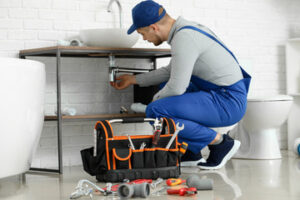A well-trained dog is a wonderful companion. Unfortunately, many dogs are not trained properly.

If your dog has trouble following your commands, there’s a good chance there is an underlying relationship problem. It’s important to get super clear on your command definition and be consistent during training sessions AND everyday life. Read on Live Oak Dog Obedience for more information.
Whether you train your dog yourself or attend obedience classes, teaching him basic commands is one of the best ways to ensure that he learns good behavior. Obedience training can help prevent bad habits, such as jumping on people and barking or chewing inappropriately. It can also help address more serious problems, such as wandering or pulling on the leash while walking.
There are two main methods of dog obedience training: aversive-based and reward-based. Aversive-based training uses techniques, such as loud, unpleasant noises and physical corrections, to get a dog to do what you want it to do. Reward-based dog obedience training, on the other hand, uses positive reinforcement and treats to get a dog to do what you wanted it to do.
The best method of dog obedience training depends on the individual dog and the owner. However, there are some criteria that every training method must meet. The first is that the behavior must be learned. That means that the dog understands what is being asked of it and can repeat the behavior over and over again. This can be verified by watching the dog or asking the dog to perform the behavior again.
Another criteria is that the training must be safe and effective. This can be measured by evaluating how much pain the dog must endure for the behavior to be performed and the effectiveness of the trainer’s technique. The trainer must be able to use the least amount of force necessary to achieve the desired result. This is often referred to as the “least intrusive, minimally aversive” (LIMA) approach.
A third criterion is that the behavior must be desirable to the dog. If the dog does not want to do the behavior, it will not be rewarded or reinforced, and it is unlikely to be repeated. For example, a dog that jumps up on people should be trained not to do so by removing the attention and petting it gets when it jumps.
Finally, the training must be consistent and based on a clear plan. For instance, a dog that is being taught the command “sit” should sit every time it is asked to do so, even in the presence of other dogs or people who may be more interesting than the trainer. This helps develop the dog’s self-control, which is needed to follow commands even when they are being offered something else they would rather do.
Training Goals
Training goals help you and your dog work together towards a mutually beneficial outcome. These may be short-term, such as “leash walking in the house” or “recall” in a quiet space outdoors,” or long-term goals like “getting your dog to heel.” Goals should be measurable and achievable, and should align with your overall lifestyle and behavior plans for your pet.
Each dog is unique, and a one-on-one trainer can tailor their approach to the individual to achieve more efficient results. Private sessions allow for focused interaction, and can help to address issues that can’t be resolved in a group class setting. A trainer can also communicate with multiple family members on the same team to encourage unified effort and accelerate learning.
To determine the right goals for your pet, you’ll need to take into consideration their personality and behavioral needs, as well as what they’ve already learned through natural means. In general, reward-based obedience training tends to work more quickly than aversive methods, which can develop fear-based responses in dogs.
A balanced trainer is one who uses positive reinforcement, including treats, toys, and playtime to motivate behavior, but can also use aversive tools and techniques when necessary. This approach, often referred to as operant conditioning, helps dogs learn quickly and effectively, while maintaining a healthy relationship with their handlers.
Training your dog is a process that requires time and dedication from both you and your animal. Achieving long-term goals can feel daunting at times, but it’s important to keep your eye on the prize and remember that success is a journey. Breaking up larger training goals into smaller, manageable objectives can help you track your progress and stay motivated.
For example, you may want to teach your dog to sit or heel on command, but the first step in that process might be getting them to lie down in front of you. You can then move on to the next step, which might be rewarding them for lying down. This will help them associate the act of lying down with a positive outcome, and will increase their motivation to continue performing the behavior.
Training Time
The amount of time you spend training your dog each day or week will have a major impact on how quickly they pick up new behavior. However, it’s important to avoid overtraining. Too much training can cause your dog to lose interest, become frustrated and ultimately give up on the new behaviors. Shorter training sessions with more positive repetitions tend to work best for most dogs.
Typical obedience classes run for six weeks and meet once a week. This is usually enough time to teach the basic commands of sit, down, come, and heel when walking on a leash. In addition, some training classes may focus on more advanced obedience skills such as a “stay” command and “heel walk” while walking on a loose leash.
If you’re working on basic obedience at home, it’s generally better to keep training sessions short in order to maintain your dog’s attention and avoid boredom. However, it’s also important to add some training into your daily routine, like practicing a “sit” while preparing meals or a “down” during walks.
It’s also a good idea to train with a trainer on a regular basis. This will help you with the timing of your obedience commands and provide the opportunity to learn techniques that can be applied in real-life situations.
If your dog is ignoring commands, it’s likely there is an underlying relationship issue that needs to be addressed. The right behavior therapy program can help you overcome your dog’s problems and get them listening to their owner once again.
Lastly, it’s also essential that you don’t punish your dog during training sessions. Punishment can lead to fear, confusion and disengagement. Instead, if your dog does not obey your commands, it’s best to redirect them with something they enjoy (like a long walk or their favorite chew toy) until they return to listening to your commands. If necessary, you can use small amounts of positive punishment such as pops with a clicker, verbal commands (e.g., no), or physical methods like a gentle collar correction. However, it’s best to avoid negative punishment altogether as this will damage your relationship with your dog.
Reward System
One of the most important aspects of training a dog is the reward system. Reward systems encourage positive behaviors by using treats or other rewards that are conditioned into the dogs responses. Reward systems work well for many different dog behaviours and are suitable for any age of dog. They are also a great way to teach tricks and more complex behaviors.
The key to any successful reward based training is consistency and timing. The dog needs to learn that the clicker (or other marker) means a treat, and it must be given immediately after the desired behavior is performed.
In addition, the treat must be something that the dog likes and will be able to finish within a few seconds of receiving it. This will ensure that the dog is motivated to repeat the desired behavior in order to receive the reward. Once the dog has mastered a behavior, it should be trained to perform the same behavior for a non-treat reward like verbal praise or play. Non-treat rewards will still need to be rewarded quickly and in the same manner as the treat-based reward.
Lastly, a grading scale should be used to help the dog improve and become better at performing the behavior. For example, if a dog has been consistently rewarding themselves with a Jackpot treat (several treats in a row) for 20 second Stays and they break the Stay 4 times, it is time to start reducing that Jackpot reward and increasing the length of the stay to get them back on track.
Ultimately, the most important thing to remember is that dogs learn through reinforcement and not punishment. Punishment will only lead to fear and anxiety in the dog and will not motivate them to offer new behaviors for you to reinforce. Rewards based training is the most effective method for teaching a dog, and will result in a happy, well-behaved dog. Just make sure to avoid using treats as a bribe as it will lead to a dog that is treat savvy and will only do what they think you want them to do to get their reward.




